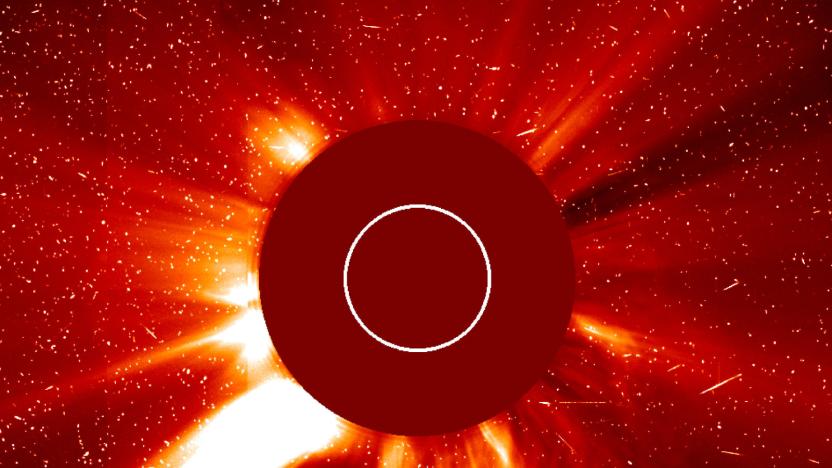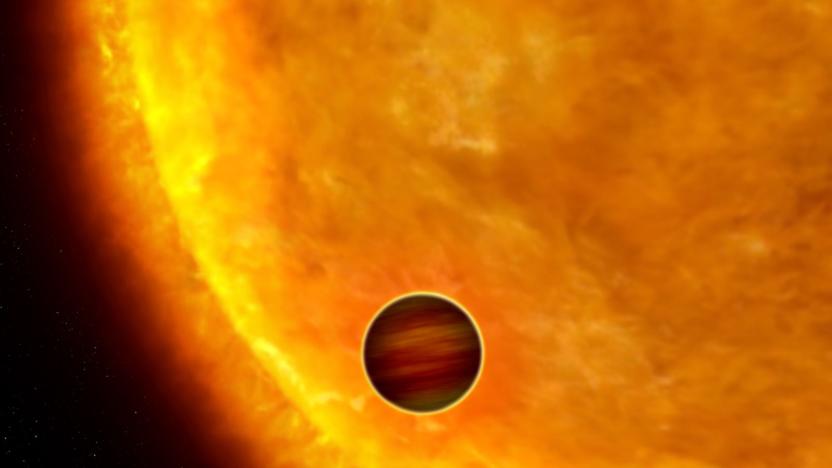coronagraph
Latest

NASA selects proposals for smallsats built to study deep space
NASA is expanding plans to use small satellites (aka smallsats) to explore the Solar System. The agency has picked two proposals for smallsat technology that would improve observations in deep space, where they could help improve models that predict space weather. One, Science-Enabling Technologies for Heliophysics (SETH), would demo both optical communications as well as a detector that can spot fast-moving chargeless atoms emanating from the Sun. Solar Cruiser, meanwhile, would include both a giant 18,000 square foot solar sail as well as a coronagraph that could study both the Sun's magnetic field as well as the velocity of coronal mass ejections.

Scientists can directly observe alien planets with a new tool
Astronomers usually have to study exoplanets through roundabout ways, such as watching for the decrease in light when a planet crosses in front of a star. However, they'll soon have a reliable way to observe those alien worlds directly. A Princeton-led research team has successfully tested CHARIS, a supercooled spectrograph instrument that isolates reflected light from large planets (bigger than Jupiter) to reveal their age, mass and temperature. The key is its use of a coronagraph that separates planetary light from the host star's rays -- effectively, it's making sure the needle stands out from the haystack.

Telescope filter helps spot Earth-like alien worlds
In the hunt for planets around distant stars, the stars themselves are often the worst enemy. They're so bright that you rarely spot anything smaller than a gas giant, which isn't much help when you're trying to find habitable worlds. An alliance of American and Dutch researchers may have the ticket to locating Earth-like bodies, though. They've developed a new variety of coronagraph (a telescope filter that blocks starlight) powerful enough to give a much better view of the objects around stars, even when they're half as far from their hosts as Earth is to the Sun. The key is that it doesn't block light directly, like other coronagraphs -- it instead has the light waves cancel each other out, even in the infrared wavelengths where stars tend to blot out their orbiting companions.

Total solar eclipse coincides with supermoon and spring equinox
The end is nigh, Engadget readers: a triumvirate of celestial events is happening simultaneously. Okay, that might be a bit of an overstatement, but until we hit the other side of today's supermoon, spring equinox (yay!) and total solar eclipse, we just won't know. As The Wall Street Journal tells it, this sort of thing is "extremely unusual." Total solar eclipses -- where the moon plays middleman and blocks the sun from our view -- happen about once every year-and-a-half. Supermoons and the equinox? A handful of times per year and once annually, respectively.

